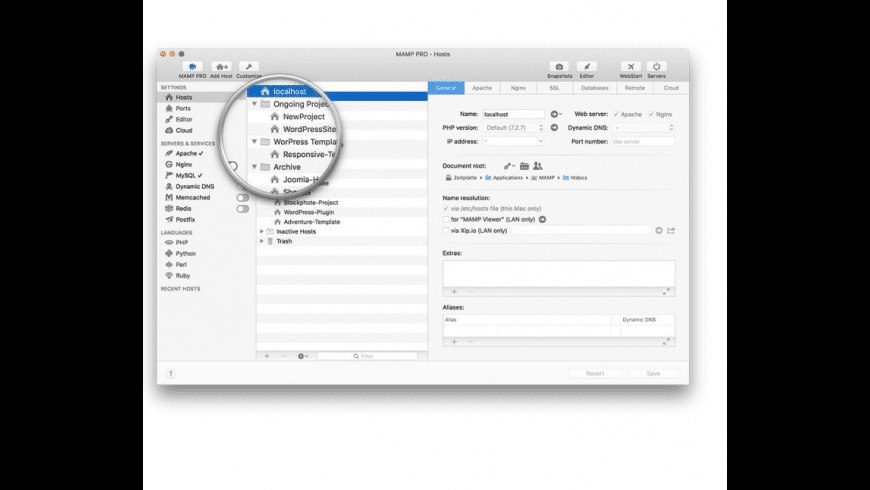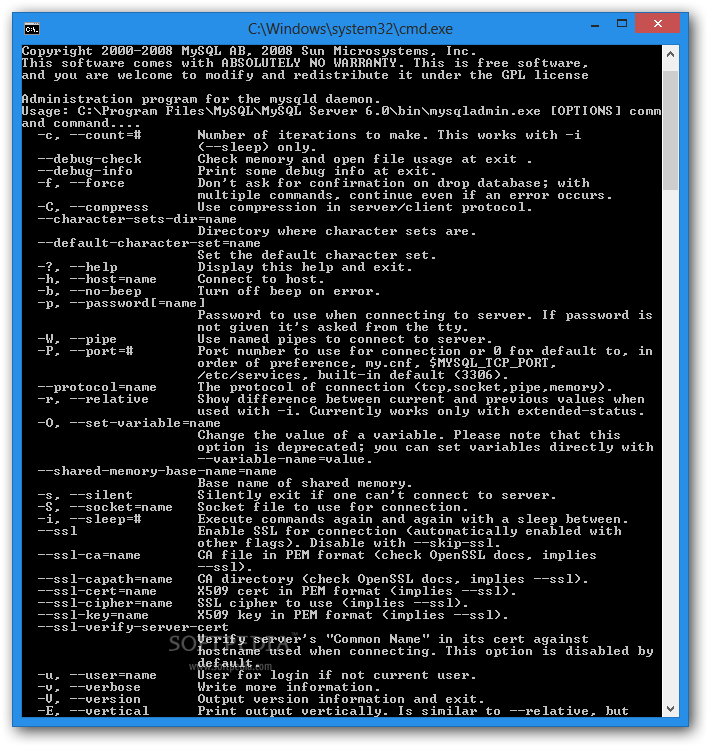MAMP stands for: Mac, Apache, MySQL and PHP. With just a few mouse-clicks, you can install Apache, PHP and MySQL for OS X! It installs a local server environment in a matter of seconds on your OS X computer, be it PowerBook or iMac. Like similar packages from the Windows- and Linux-world, MAMP comes free of charge.
- Sep 28, 2017.
- Dec 09, 2014.
- In addition to the core installation, the Package Installer also includes Chapter 3, Installing a MySQL Launch Daemon and Chapter 4, Installing and Using the MySQL Preference Pane, both of which simplify the management of your installation.
- Assuming your MAC version is at least 10.10, choose the DMG version: Mac OS X 10.12 (x86, 64-bit), DMG Archive and download, getting: mysql-5.7.17-osx10.12-x8664.dmg Open the '.dmg' file to reveal the installation file: mysql-5.7.17-osx10.12-x8664.pkg.
- Apr 20, 2017.
- Feb 29, 2020.
This should be really straightforward, but I found myself googling around. I wrote a recent post about how to create a web app with the Laravel PHP framework but connecting to the database was tricky.
First step, find out what version of OS X you are running. Click the apple icon in the top right corner of your screen and click “About This Mac”. I got something like this:
Next step, head over to the MySQL downloads page.
So with my computer I am running 10.11 and we want the .dmg file. Download Mac OS X 10.10 (x86, 64-bit), DMG Archive. Then you get to this lame screen:
MySQL is free and open source software (FOSS), you do not need to sign up or create an account. Click “No thanks, just start my download”. I let the download go directly to my “Downloads” folder when prompted, though you could place it anywhere. The download will take some time because it is 350mb, go get a coffee. Once the download is complete. Double click the file and a screen like this will open
Double click it and go through the install process.

When I did it I got an alert box:
Add to path. This went in ~/.zshrc because I am using ZSH. If you are using bash for terminal (the default on OS X) this will be the ~/.bashrc file or ~/.bash_profile. This post explains the difference between the two files.
Add the mysql download to your path so that you can use the “mysql” command from the command line.
Then test it out:

Now that we have MySQL installed and accessible from the Terminal, it’s time to connect to the database and start the MySQL server. Let’s log in as root user (root@localhost) and use that funky password that popped up in the alert window after our install. In the above case it’s #fW&tYe?<8?w
Great! Now we can create databases and run SQL queries right from the command line. That’s an awesome start, but there’s no way anyone is going to remember that password, nor is it enjoyable to type in every time we want to run MySQL. The full docs on changing passwords are here. For OSX you can run the command:
The PASSWORD('root') sets my password to “root”. Easy to remember right? You can set your password to anything you like, such as PASSWORD('myN3wp@Ssw0rd').
To stop the server in the terminal run control + D. Congratulations! You’ve installed MySQL on OSX, made it accessible from the command line and updated your password for the root user.
To start setting up a Laravel application and connect to a database using Sequel Pro you can follow my next tutorial:
Thanks for reading!
Update (9/16/17): Expired passwords
When trying to login to MySQL on OSX recently I ran into the following error:
There are a lot of StackOverflow threads and articles about this, many require writing SQL commands, though that was difficult for me without access to the terminal. In order to alleiviate this I found this SO answer that saved me:
Update 03/29/18:
- Helpful steps for Install MySQL on macOS Sierra as a gist link.
Mysql Mac 10.10 Download Free
Update 05/14/19:
Mysql Client Download For Windows 10
- I recently ran into an error when trying to fire up the MySQL shell:
I found the solution in this homebrew issue. Create an empty directory for this path: mkdir /usr/local/etc/my.cnf.d
For a list of macOS versions that the MySQL server supports, see https://www.mysql.com/support/supportedplatforms/database.html.

Mysql Download Mac Os
MySQL for macOS is available in a number of different forms:
Native Package Installer, which uses the native macOS installer (DMG) to walk you through the installation of MySQL. For more information, see Chapter 2, Installing MySQL on macOS Using Native Packages. You can use the package installer with macOS. The user you use to perform the installation must have administrator privileges.
Compressed TAR archive, which uses a file packaged using the Unix tar and gzip commands. To use this method, you will need to open a Terminal window. You do not need administrator privileges using this method, as you can install the MySQL server anywhere using this method. For more information on using this method, you can use the generic instructions for using a tarball, Installing MySQL on Unix/Linux Using Generic Binaries.
In addition to the core installation, the Package Installer also includes Chapter 3, Installing a MySQL Launch Daemon and Chapter 4, Installing and Using the MySQL Preference Pane, both of which simplify the management of your installation.
For additional information on using MySQL on macOS, see Chapter 5, General Notes on Installing MySQL on macOS.